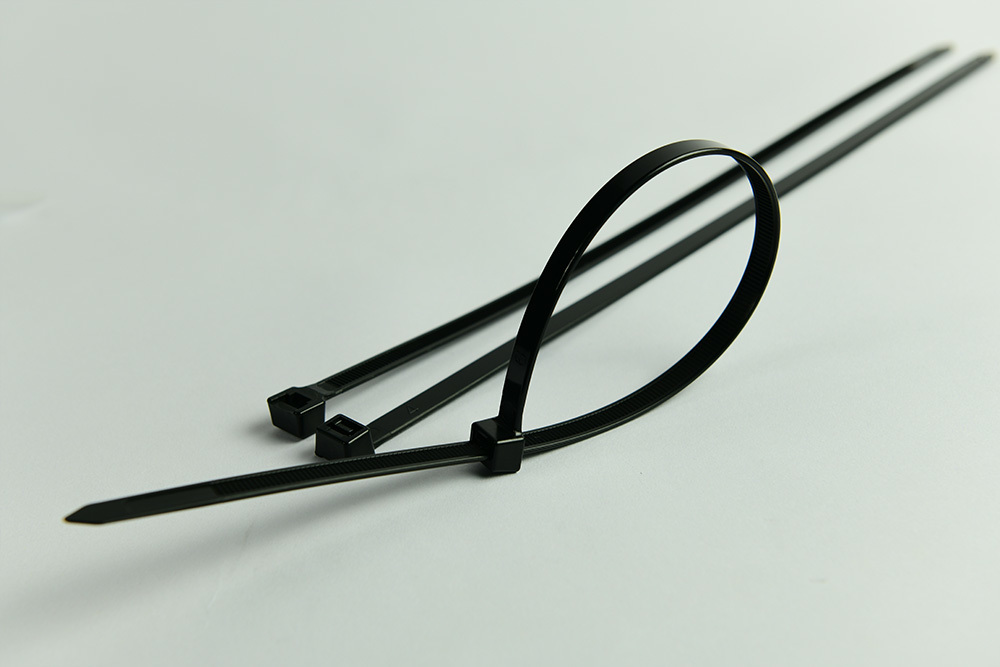29
2025
-
10
Recommendations for plastic cable ties brands
Author:
Visual Inspection for Surface Quality and Material Consistency
High-quality plastic cable ties exhibit a uniform color and smooth surface free from bubbles, cracks, or burn marks. Discoloration or uneven textures often indicate impurities or poor material blending. Inspect the edges for sharpness or excess plastic (flash), which can weaken the tie. Flex the tie gently; premium nylon ties will bend without cracking, while low-grade plastics may develop white stress lines or snap under pressure.
Molding Flaws: Ties with visible defects like flow lines, warping, or incomplete tooth formation are prone to failure. Smooth, consistent edges suggest precise manufacturing, while rough finishes may compromise durability.
Color Stability: Ties exposed to UV light should retain their hue. Fading or yellowing indicates inadequate UV stabilizers, which are critical for outdoor use.
Mechanical Performance: Tensile Strength and Locking Mechanism
A reliable cable tie must withstand its rated tensile load without slipping or breaking. Apply gradual pressure to the tail until it reaches its breaking point. Quality ties will snap near their stated capacity (e.g., 50 lbs for a “50-lb” tie), while overstated or mislabeled products may fail prematurely.
Locking Mechanism: The teeth should engage smoothly and resist slippage. Yank the tail sharply to test grip; a secure tie will hold firm, while a faulty one may slide or release.
Flexibility vs. Rigidity: Ties should bend easily during installation but resist bending in the opposite direction once locked. Overly rigid ties may break during tightening, while excessively flexible ones may loosen over time.
Environmental and Chemical Resistance
Cable ties used in harsh environments must resist degradation from UV rays, moisture, or chemicals. Submerge ties in water, oil, or a mild solvent for 24 hours. Quality ties will maintain their shape and strength, while inferior ones may swell, discolor, or weaken.
UV Exposure: Place ties under a UV lamp or in direct sunlight for 72 hours. Ties with UV stabilizers will remain flexible, while untreated ties become brittle or yellow.
Temperature Tolerance: Freeze ties overnight and attempt to bend them. High-quality nylon ties will flex without cracking, while low-grade plastics may shatter. Similarly, expose ties to high temperatures (e.g., 185°F) to check for melting or deformation.
Chemical Resistance: Ties used in industrial settings should resist oils, acids, or solvents. Look for ties labeled as “chemical-resistant” or test them in controlled environments to ensure performance.
plastic cable ties
Previous Page
Hot News
2025-10-31
Selection of corrosion resistance performance of plastic cable ties
The corrosion resistance of plastic cable ties is primarily determined by their polymer base and additive formulations. Polyamide 66 (PA66), a common material for industrial ties, exhibits moderate resistance to hydrocarbons, oils, and weak acids. However, its performance diminishes in the presence of strong acids, bases, or chlorinated solvents. To enhance durability, manufacturers incorporate stabilizers such as hindered amine light stabilizers (HALS) and UV absorbers, which prevent degradation from environmental stressors.
2025-10-31
Selection of fire resistance performance for plastic cable ties
The fire resistance of plastic cable ties is primarily determined by their material composition and certification standards. The most widely recognized metric is the UL94 flame rating system, which categorizes materials based on their burning behavior. For instance, ties labeled as UL94 V-0 exhibit superior fire resistance compared to V-2 rated variants.
2025-10-30
Environmental protection requirements for plastic cable ties
Global environmental regulations have significantly tightened restrictions on hazardous substances in plastic packaging materials, including cable ties. The Toxic Packaging Clearinghouse (TPCH) in the United States updated its model legislation in 2025, imposing strict limits on harmful chemicals.
2025-10-30
Analysis of the Cost Performance of Plastic Cable ties
The core material of plastic cable ties determines their durability and application scope. Nylon (polyamide) variants, such as PA6 and PA66, are widely regarded for their high tensile strength, chemical resistance, and ability to withstand temperatures ranging from -40°C to 85°C.

